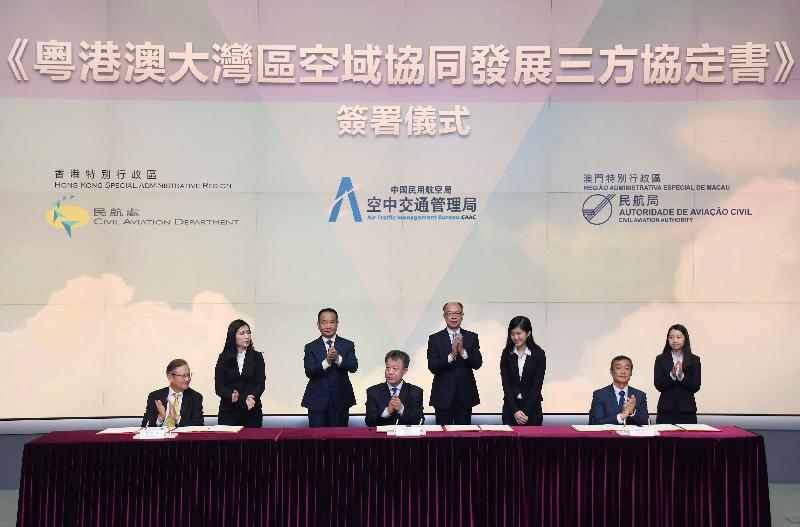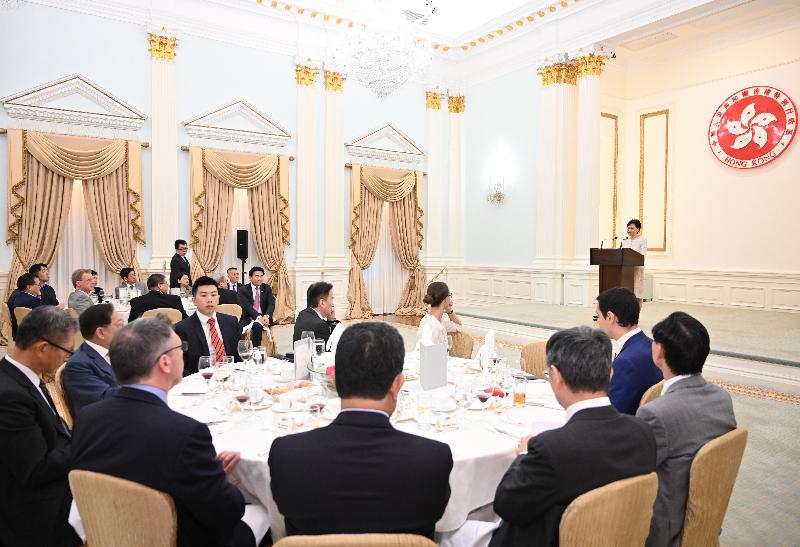Make prior work arrangements for typhoons and rainstorms
The Labour Department (LD) today (July 30) reminded employers to make prior work arrangements for staff during and after typhoons and rainstorms. These arrangements not only can ensure the safety of employees and the smooth operation of establishments, but also are conducive to maintaining good labour-management relations.
"Employers should make prior work arrangements for staff and contingency measures during and after typhoons and rainstorms. In drawing up and implementing the work arrangements, employers should give prime consideration to employees’ safety and the feasibility for employees to travel to and from their workplaces. Employers should also give consideration as much as possible to the situations faced by individual employees, such as their place of residence and the road and traffic conditions in the vicinity, and adopt a sympathetic and flexible approach with due regard to their actual difficulties," an LD spokesman said.
"To avoid misunderstanding, disputes and confusion, employers should draw up the work arrangements in consultation with employees and make appropriate updates or amendments based on the experience of each occasion and the needs of both employers and employees, as well as the actual situations."
The work arrangements should cover the following matters:
* Arrangements in respect of reporting for duty;
* Arrangements in respect of release from work;
* Arrangements in respect of resumption of work (e.g. the number of hours within which employees should resume duty after the warning concerned is cancelled, and when safety and traffic conditions allow);
* Arrangements regarding working hours, wages and allowances (e.g. calculation of wages and allowances in respect of reporting for duty and absence); and
* Special arrangements in respect of essential staff in times of adverse weather.
"Employers should conduct a timely and realistic assessment of whether there is any need for requiring essential staff to report for duty when a typhoon or rainstorm warning is in force. In assessing the need for essential staff, employers should take into account the safety of employees, including the feasibility for employees to travel to and from their workplaces in adverse weather. Employers should also consider the business nature, operational needs and urgency of service, with due regard to the manpower requirements, staffing establishment and individual needs of employees. Employers should require only absolutely essential staff to report for duty in adverse weather or when 'extreme conditions' are in force and the number of essential staff should be kept to the minimum as far as possible. When weather conditions continue to worsen and public transport services are to be suspended shortly, employers should release their staff as soon as practicable.
"When a Pre-No. 8 Special Announcement is issued during working hours, employers should release employees from work in stages as soon as practicable. To ensure the safety of employees and to enable them to arrive home before suspension of public transport services, employees who have mobility problems (for example, pregnant employees or those with disability), employees who rely on transport services which are prone to being affected by adverse weather conditions (for example, ferry services) for commuting to and from work, and those who work in or are living in remote areas (for example, outlying islands) should be given priority to leave. Other employees should be released later in stages according to their travelling distance or the time required for returning home.
"Under special situations, if it is necessary for employees to report for duty under adverse weather conditions, employers should discuss with them in advance the work arrangements and contingency measures. If public transport services are suspended or limited when Typhoon Warning Signal No. 8 (T8) or above is in force, employers should provide safe transport services for employees travelling to and from workplaces, or grant them an extra travelling allowance.
"As typhoons and rainstorms are natural occurrences that cannot be avoided, for employees who are not able to report for duty or resume work on time due to adverse weather conditions, employers should not withhold their wages, good attendance bonus or allowances without reasons. Employers should enquire into the reasons and give due consideration to the exceptional circumstances in each case and should not penalise or dismiss the employee concerned rashly," he said.
The spokesman also reminded employers to observe the statutory liabilities and requirements under the Employment Ordinance, the Occupational Safety and Health Ordinance, the Factories and Industrial Undertakings Ordinance, the Employees' Compensation Ordinance and the Minimum Wage Ordinance.
Employers should also note that they have an obligation to provide and maintain a safe working environment for their employees under the Occupational Safety and Health Ordinance.
"If employees are required to work in times of typhoons and rainstorms, employers should ensure that the risks at work are reduced as far as reasonably practicable," the spokesman said.
Under the Employees' Compensation Ordinance, employers are liable to pay compensation for death or injury incurred when employees are travelling by a direct route from their residence to their workplace, or from their workplace back to their residence after work, four hours before or after working hours on a day when T8 or above or a Red or Black Rainstorm Warning is in force.
The LD has revised the "Code of Practice in Times of Typhoons and Rainstorms", which outlines the major principles, the framework, the reference guidelines and information on relevant legislation for reference. The booklet can be obtained from branch offices of the Labour Relations Division or downloaded from the department's webpage (www.labour.gov.hk/eng/public/wcp/Rainstorm.pdf).




